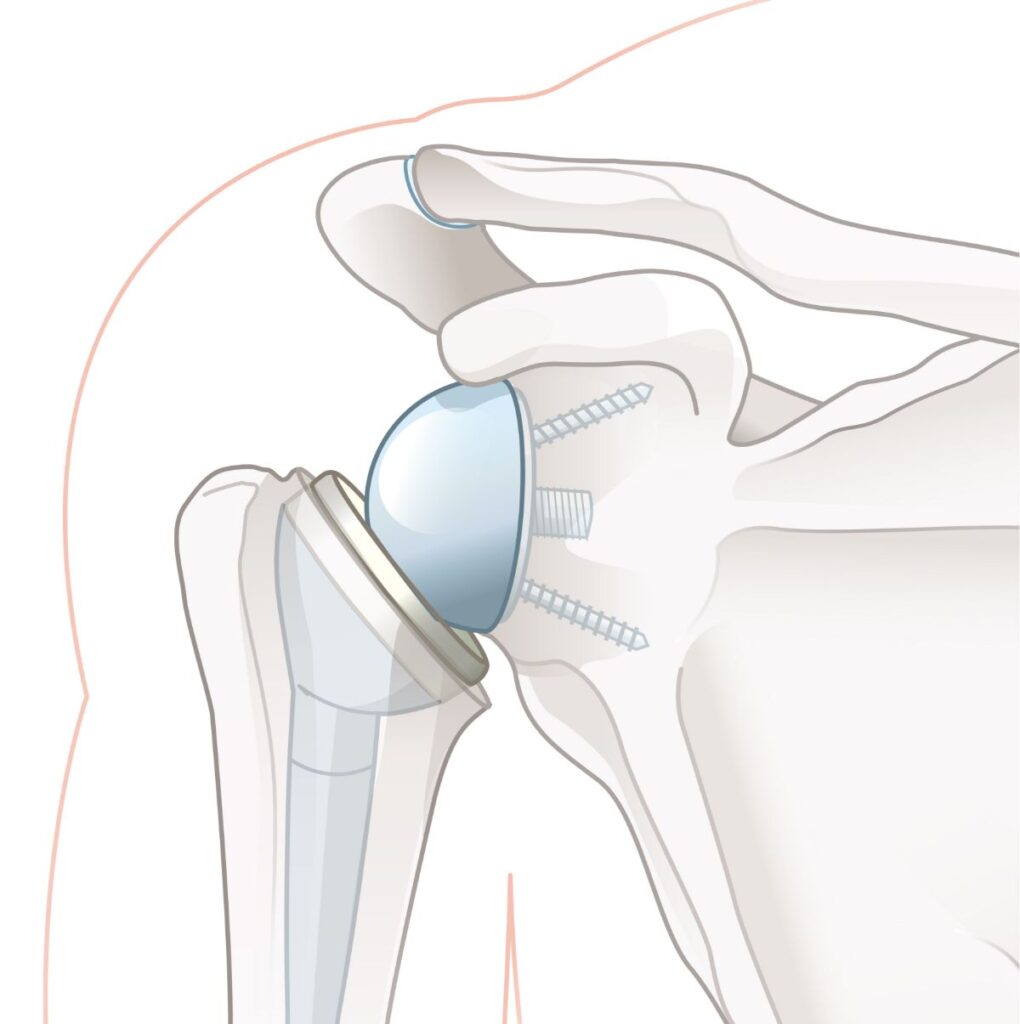Reverse Total Shoulder Arthroplasty
in Los Angeles
Arthroplasty is the replacement or reconstruction of a joint that has been damaged or has degenerated over time, as with arthritis. Glenohumeral osteoarthritis is the wearing out of cartilage in the shoulder joint. People who have severe osteoarthritis of the shoulder joint with accompanying long-term damage of the rotator cuff are candidates for reverse total shoulder arthroplasty.

Damage of the Rotator Cuff
Since there is damage to the rotator cuff, often resulting in the lack of ability to move lift one’s arm above shoulder height, a traditional shoulder replacement would not be effective. Therefore, a reverse total shoulder arthroplasty is performed, where the positions of the ball and socket components of the shoulder are reversed. This procedure was created by orthopedic surgeons in France.
The ball of the shoulder is replaced with a socket and the socket of the shoulder is replaced with ball. With the reverse total shoulder, a patient will use accessory shoulder muscles, such as the deltoid, to raise the arm in the absence of the rotator cuff. The pain associated with osteoarthritis of the shoulder is greatly reduced with this procedure. Pain associated with osteoarthritis of the shoulder is also greatly reduced, and patients regain significant function of the shoulder. The range of motion is not full after this procedure but it is significantly improved without pain.






